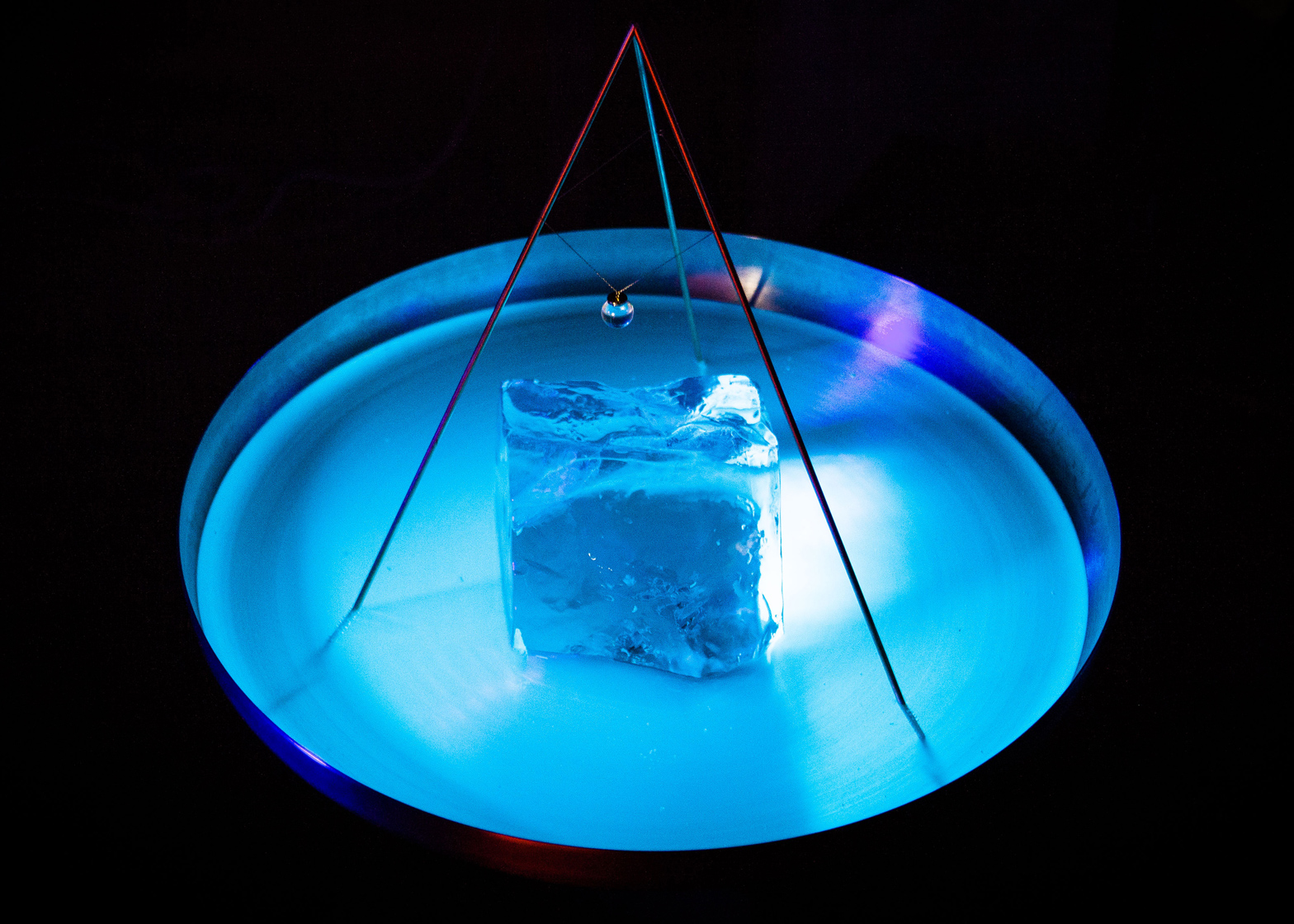London design studio Bompas & Parr has used bioluminescent algae to create a collection of orb-shaped necklace pendants that glow when shaken.
The duo partnered with jewellery brand Goldie Rox to create the glow-in-the-dark Mermaid's Lunchbox range – which it claims is "a world first in decorative jewellery".
The pair collaborated with Simon Park – a senior lecturer in Molecular Biology at Surrey University – to culture and harvest pyrocystis algae.
Its natural glow is a result of a chemical reaction between light-emitting pigment luciferin and an enzyme called luciferase, and is used in the wild as a defence mechanism against predators. Designer Theresa Van Dongen also used this phenomenon to create a glowing lamp.
Bompas & Parr embedded the algae into small glass spheres, which are individually strung on gold and silver chains. The orbs create an "eery glow" in response to movement, which can only be seen in the dark.
"The bioluminescence of sea water has been recorded for centuries as a strange mystifying event, frequently contributing to what was called 'burning of the sea' or 'sea sparkle' by sailors and coastal inhabitants," explained studio founders Sam Bompas and Harry Parr, who also created colour-changing flowers for Valentine's Day.
"In historical account, bioluminescent water was thought to contain a connection to other worlds hidden deep beneath the sea's surface," they added.
Also included in the jewellery collection are crab lockets, clam-shaped earings, and prawn rings, all made from solid gold or silver.
"Jewellery design of the Victorian era romanticised the natural world, epitomised by Queen Victoria's snake engagement ring set with turquoise," said Parr. "Here we partnered with Goldie Rox to bring jewellery into the modern age, where bioluminescent algae combine with sea-inspired shapes and forms."
The glowing pendants will be available for £2,000 each, and made their debut at an event held in London's Lights of Soho art gallery. To accompany the event, Bompas & Barr served glowing drinks and jellies – reminiscent of the luminescent ice cream they created for ice cream brand Cornetto.
Warsaw collective Pangenerator also created light-up jewellery, designing digital necklaces that could be projected onto wearers' bodies from their phone.
Algae is becoming a common material for designers, who are increasingly choosing the water-blooming organisms for their green credentials. Ari Jónsson combined red algae powder with water to create a biodegradable bottle, while Blond and Bieber used algae to create completely non-toxic textile dyes.
Photography is by Daniel Resende and Bompas & Parr.
Like Dezeen on Facebook for the latest architecture, interior and design news »

